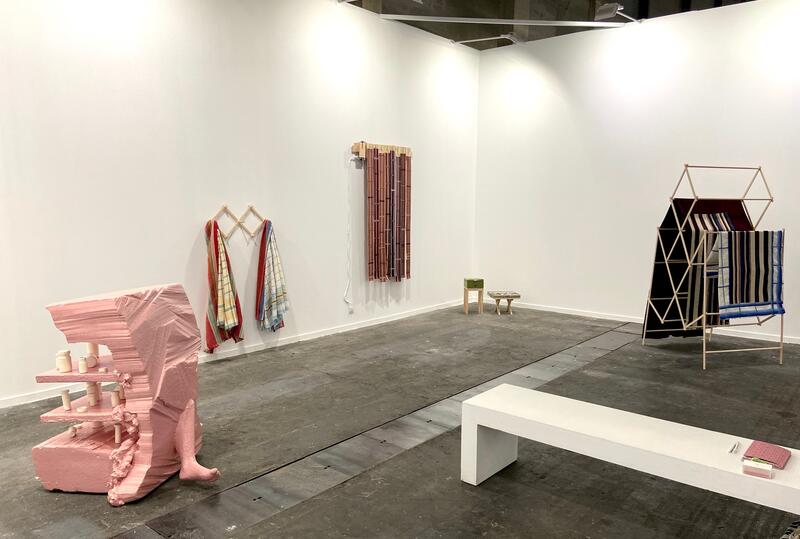ARCOmadrid 2020: PROYECTOS ULTRAVIOLETA, HIGHLIGHTED STAND OF THE DIALOGUES SECTION
Within the framework of the Dialogues section, ARCOmadrid presented the First Iberia Prize to the Guatemalan platform Proyectos UltraVioleta for the work of Hellen Ascoli and Naufus Ramírez-Figueroa.
Of the ten galleries selected by curators Agustín Pérez Rubio and Lucía Sanromán to participate in the Dialogues section, the I Iberia Prize was awarded to Proyectos UltraVioleta, a Guatemalan contemporary art platform that exhibits the works of Hellen Ascoli (Guatemala City, 1984) and Naufus Ramírez-Figueroa (Guatemala City, 1978). The jury, constituted by the director of the Museum of Contemporary Art of Barcelona, Ferrán Barenblit, and the renowned independent curator Andrea Pacheco, highlighted the proposal exhibited by Proyectos UltraVioleta: a dialogue focused on the presence of the body and identity.

Represented at the fair by the co-founder of the platform, artist Stefan Benchoam (Guatemala City, 1983), the Proyectos UltraVioleta proposal consists of six works developed by two local artists living abroad.
On the one hand, the video art Mimesis of Mimesis - a work inspired by the Mímesis painting, by the surrealist artist Remedios Varo (Spain, 1908-1963) - and the Estante con frascos de medicamentos (Shelf with medicine bottles), both produced by Ramírez-Figueroa, reflect directly on the conflicts that come from the objectification of the body. In the first case, the artist presents a short video that shows the interior of the Royal Tropical Institute of Holland - an institute that had its heyday during the colonialist period - with lots of chairs and wallpapers stacked and unholstered and later displayed itself, naked and buttoned as if it were part of the furniture. As for the sculpture, it is the reproduction of a pink bathroom shelf full of medicinal bottles and a leg that is part of the shelf. In this way, Naufus “exposes the vulnerability of the body,” explains Claudia, who represents the stand next to Benchoam. Victim of exile by the warlike conflicts of his country, Naufus Ramírez-Figueroa manifests the differences of his body as a political consequence.
Under other work axes, Hellen Ascoli presents three works that take a native pre-Hispanic practice of her region, the waist loom, to manifest the relevance of the body in the constitution of art, ergo, of culture. Three of the four pieces of Ascoli (of which one of them, A veces el cielo se abre (Sometimes the sky opens), was awarded the XIII Illy Art Sustain Award) take their name from a poem of its authorship: The Litany of the Volcano. Thus, the artist thinks of the double nature that the Guatemalan identity possesses, constituted around the presence of volcanoes, geological structures that are standardized and “decorated” as part of the local landscape, that in turn represent potential destructive entities that remain dormant in the everyday life
This analysys made by Ascoli reflects also with her work Los que nos recuerdan que el cambio son la única constante (The ones that remind us that change is the only constant). A series of vertical weaves rise and fall using a random electronic mechanism. Impermanence and dynamic condition are represented here, paradoxically, as the only permanent. As Juan José Saer describes in his story The Visible: "Being aware of that succession is what gives the world meaning, not the meaning that would prefer our desire, but that of things as they are."
-
Photo courtesy of ARCOmadrid




